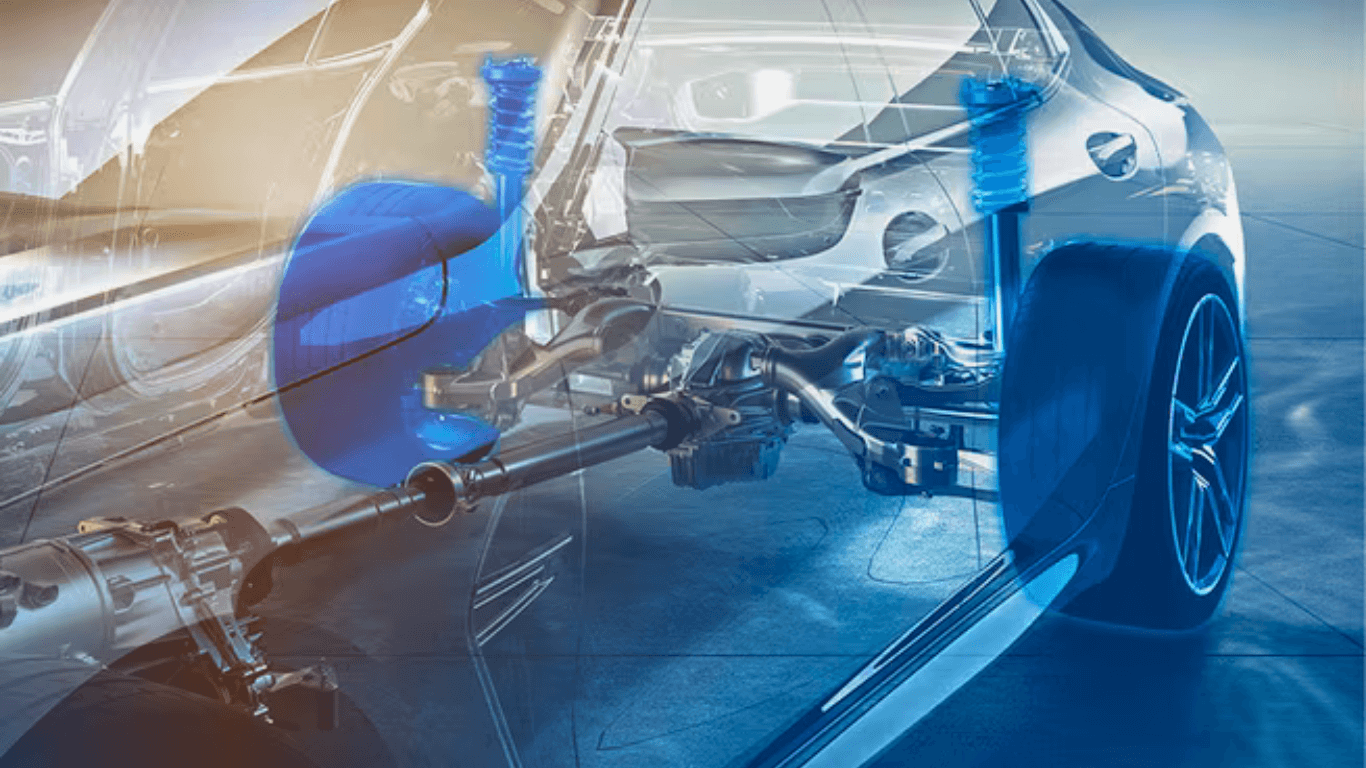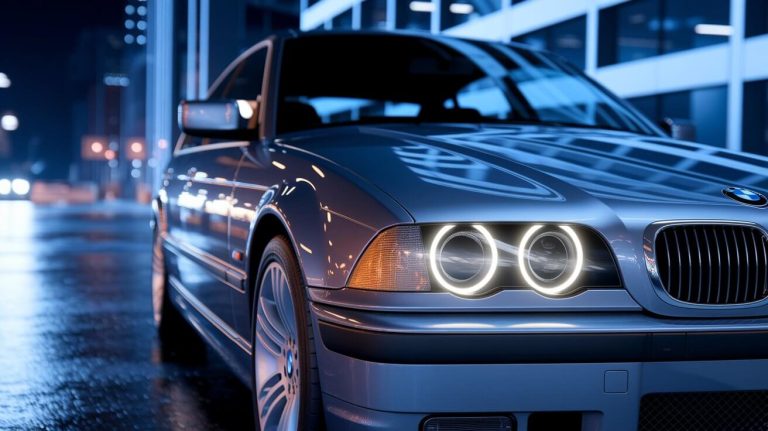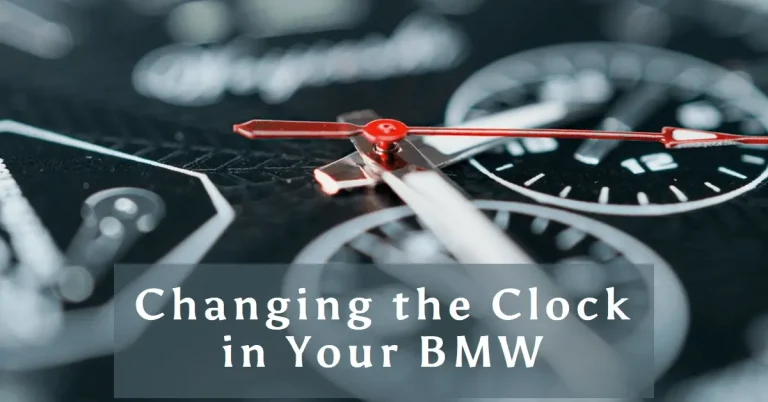Adaptive M Suspension: What is it and How Does BMW’s System Work?
BMW is well known for making some of the best performing and best handling vehicles on the road. Key to the company’s reputation are advanced suspension systems that blend a dynamic, engaging ride with day-to-day comfort and usability.
Adaptive suspension technology takes BMW’s well-regarded suspensions to the next level. These high-tech systems can automatically adjust and optimize a vehicle’s suspension on the fly to adapt to changing road conditions and driving styles. The result is a truly customizable driving experience.
One of BMW’s most advanced adaptive suspension offerings is the Adaptive M Suspension featured on high-performance BMW M models. This state-of-the-art system was engineered by BMW group’s M performance division specifically to maximize the capabilities of BMW’s most powerful production vehicles.
But what exactly is BMW’s Adaptive M Suspension and how does this advanced suspension technology work to enhance performance and comfort? Read on as we dive into the details of Adaptive M Suspension. We’ll cover:
- What is BMW Adaptive M Suspension and how does it work?
- What are the key benefits of Adaptive M Suspension?
- How does Adaptive M compare to similar systems from Mercedes, Audi, and others?
What is BMW Adaptive M Suspension?
BMW Adaptive M Suspension is an electronically controlled suspension system that actively adjusts the damping characteristics of a vehicle’s shock absorbers in real time. This enables the suspension to adapt its firmness and responsiveness to match both the road conditions and the driver’s inputs.
The system was developed by BMW’s high performance M division specifically for use in BMW M cars and high-powered M SUVs. Adaptive M suspension replaces BMW’s earlier Electronic Damper Control.
Unlike conventional passive suspensions with fixed damping rates, Adaptive M suspension is an active system that uses electronic sensors and electromagnetic valves to adjust shock absorber firmness in a matter of milliseconds. This allows the suspension to continually optimize the balance between ride comfort and dynamic handling.
Some of the BMW M cars that feature Adaptive M suspension include:
- BMW M3
- BMW M4
- BMW M5
- BMW M8 Gran Coupe
- BMW X5 M
- BMW X6 M
Now let’s look at the technical details of how BMW’s Adaptive M suspension achieves its remarkable ride and handling improvements.
How Does the Adaptive M Suspension Work?
The key components that enable BMW’s Adaptive M suspension technology are:
- Electronic Sensors – Adaptive M suspension utilizes a range of sensors that monitor driving conditions in real time. These include lateral, longitudinal, and vertical acceleration sensors that detect the vehicle’s movements. Position sensors monitor compression and rebound of the shock absorbers. All of this data gets sent to the suspension control unit up to 1000 times per second.
- Electromagnetic Valves – Firmness of the adaptive shock absorbers is adjusted using electromagnetic valves. This enables precise control of the suspension’s compression and rebound characteristics. The valves can optimize damping in just a few milliseconds.
- Suspension Control Unit – This is the brain of the system, housed in the electronic damping control unit. It analyzes data from the various sensors and seamlessly adjusts the valves to tune the shock absorbers accordingly.
- Operating Modes – Adaptive M suspension offers a choice of three modes: Comfort, Sport, and Sport Plus. The driver can select their preferred setting based on driving conditions. Alternatively, Adaptive M suspension will adjust automatically.
Here is an overview of how these components work together:
- As the vehicle is driven, electronic sensors feed data on motion, g-forces, and road conditions to the suspension control unit.
- The control unit processes this real-time data and calculates the optimal damping rate required from the shock absorbers.
- Electromagnetic valves in the shock absorbers are quickly adjusted to alter the compression and rebound characteristics.
- This cycle is continuously repeated to give the suspension the ability to adapt in real-time to road surfaces and driving inputs.
The end result is a suspension that can stiffen up to minimize body roll when cornering, then soften to soak up bumps – all automatically within a fraction of a second. This translates into a more stable, controlled ride with little compromise between comfort and performance.
What are the Benefits of Adaptive M Suspension?
BMW’s Adaptive M suspension tech brings some significant benefits both on the street and on the track:
Improved Comfort and Ride Quality
- The ability to instantly soften the suspension means Adaptive M suspension glides over bumps and provides a smooth, compliant ride when driving casually on the street.
- Damping firmness is reduced during straight line driving and low speed maneuvers to filter out vibrations and small bumps.
- By isolating the cabin from the road surface, comfort is improved even as larger wheel sizes are adopted.
Enhanced Handling and Control
- When needed for aggressive driving, cornering or track use, the suspension can firm up in milliseconds. This minimizes body lean, keeping the tires planted.
- Constant adjustments help maximize traction by ensuring the tires maintain contact with the road. This improves acceleration, braking and handling.
- Body roll, dive under braking and squat under acceleration are all reduced for more responsive, neutral handling.
Customization and Personalization
- Adaptive M suspension allows drivers to pick their preferred setting. Comfort mode offers a relaxed ride for daily commutes. Sport and Sport Plus modes ramp up the firmness for spirited, aggressive driving.
- Drivers can also let the system operate in adaptive mode where it automatically tunes the suspension based on real-time conditions. Set and forget.
- Presets allow suspension firmness preferences to be saved and recalled easily. Customized adaptive suspension settings can be assigned to your key fob.
All-Weather Capabilities
- By monitoring traction and wheel slip, Adaptive M suspension can tailor the shocks to provide optimal grip on wet, snowy or icy roads.
- Continual adjustments keep the tires better planted on slick surfaces, aiding acceleration, cornering and braking.
Performance Gains
- On the track, the Active M suspension’s improvements to tire adhesion, grip and traction shave valuable seconds off lap times.
- Reduced body movement means the car stays flatter and more composed when pushed to the limits. This inspires confidence and faster cornering speeds from drivers.
- The suspension optimizes load transfer distribution between inner and outer wheels for hard lateral acceleration maneuvers.
How Does Adaptive M Compare to Similar Systems?
BMW isn’t the only luxury performance brand to offer advanced adaptive suspension systems. Main competitors Mercedes-AMG and Audi also have their own technologies that are worth comparing to BMW’s Adaptive M suspension:
BMW Adaptive M vs. Mercedes-AMG Dynamic Ride Control
Mercedes tuner AMG uses a technology called Dynamic Ride Control on some models like the AMG GT sports car. Like BMW’s system, it provides fully variable electronic control of damping forces for the optimum balance between ride comfort and dynamics.
There are a few key differences:
- AMG Dynamic Ride Control relies on hydraulics to alter damping rates rather than the electromagnetic valves used by BMW’s Adaptive M.
- AMG’s system connects diagonally opposite shock absorbers through hydraulic lines. BMW’s tech adjusts each shock individually.
- Some reviewers note Mercedes’ system offers a slightly more compliant ride whereas BMW skews a little sportier.
Overall though, both BMW Adaptive M and Mercedes AMG Dynamic Ride offer similarly advanced real-time damping adjustment to balance ride and handling. Each tunes the suspension character towards its brand’s driving DNA.
BMW Adaptive M vs. Audi Dynamic Ride Control
Another rival sports luxury brand, Audi offers its own adaptive suspension called Dynamic Ride Control. However, there are some differences in how Audi’s system works compared to BMW’s.
Some key points:
- Audi Dynamic Ride Control uses diagonally connected hydraulic lines between the shock absorbers like Mercedes’ setup. This is focused on reducing body roll during cornering.
- It does not offer the same level of overall ride comfort and bump isolation as BMW’s more all-round system.
- Audi’s tech is aimed more specifically at stiffening the suspension for flatter cornering rather than a balance between comfort and dynamics.
In summary, Audi’s adaptive suspension prioritizes lateral dynamics and roll stabilization whereas BMW Adaptive M focuses more evenly on comfort, grip and adjustability.
BMW Adaptive M vs. GM Magnetic Ride Control
Outside of Europe, General Motors uses a mechanical adaptive suspension technology called Magnetic Ride Control. Developed by auto supplier Delphi, it rivals BMW’s system in response speed and overall capability.
Some key characteristics of Magnetic Ride Control:
- Uses a magnetorheological fluid that thickens when exposed to a magnetic field. This allows damping rates to be changed instantly.
- Adaptation is very fast – around 1 millisecond thanks to the physical properties of the fluid. BMW’s electromagnetic valves require a few ms.
- GM mostly uses MagneRide on higher performance vehicles like Corvettes and Camaros rather than luxury models.
- Tends to have a firmer, more sporting bias rather than a comfort/sport balance.
In summary, GM’s Magnetic Ride Control is technically slick and very quick to adapt. However, its applications have been more limited to sportier models from the brand. BMW Adaptive M combines similar responsiveness with a wider range of comfort and performance modes.
Conclusion: BMW’s High-Tech Suspension Showpiece
In conclusion, BMW’s Adaptive M suspension leverages the latest electronic damping control technology to optimize both ride comfort and dynamic handling performance. While similar systems exist from Mercedes and others, BMW’s setup offers one of the best balances between responsive cornering ability and everyday compliance.
This advanced suspension enables BMW M cars to take on a dual personality – relaxing luxury cruiser one moment and tenacious performance machine the next. Adaptive M suspension demonstrates BMW’s commitment to using cutting-edge technology like adjustable shock absorbers and real-time sensors to build the ultimate driving machines.
It allows drivers to customize the suspension to their needs – whether comfort, max performance or a perfect balance. Add the ability to adapt automatically in milliseconds to the road surface, and it’s easy to see why Adaptive M suspension sets BMW’s elite high-performance models apart from competitors.
So for BMW fans seeking the pinnacle of what Adaptive suspension can offer, BMW’s M division has engineered a system that lives up to its tagline – “M for Motorsport and for Magic!”







